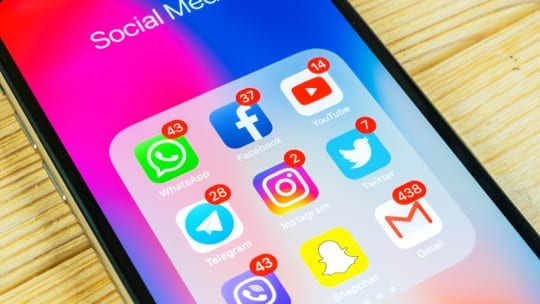
Editor’s Note: Each month we ask communicators to turn over their toolkits and tell us what falls out. In other words, What tools and technologies are most effective to have when doing your job? We also ask them to offer upsides and downsides of each tool or technology.
This month we’re featuring two of the PR News’ Social Media Luminaries honored August 10 during PR News’ Social Media Summit in San Francisco. [Note to Subscribers:You are entitled to a 33% discount on PR News events and webinars. Please contact: [email protected]]
First is Jessica McGlory, director of paid social at digital marketer Jellyfish. McGlory is known for helping to create an algorithm that assists social media marketers identify and store data about influencers in particular markets. Her work has garnered wins at The Shorty Awards and OMMA Awards.
Next is Madison Dowswell, senior manager of global digital communications for PepsiCo. She and her team won a 2018 PR News social media award for their promotion of PepsiCo’s “Performance With Purpose” initiative, which seeks to balance environmental sustainability and good health with business growth.
The responses of Dowswell and McGlory have been edited for space and clarity.
 Jessica McGlory
Jessica McGlory
The Tool: The best tool out there for social media audience analysis is Facebook Audience Insights.
The Upside:The tool is free, yet so robust. It’s a great way to gauge how any Facebook-captured audience is interacting with the platform as well as the demographics that make up the group.
It challenges stereotypes and assumptions, quite often forcing a reevaluation of who actually is interacting with content on the social media channel.
A mini-case example: Utilizing this tool led to the development of audience units that resulted in a 30% increase in trials for a brand I collaborated with recently.
The Downside: If Facebook Audience Insights brought back the ability to analyze custom audiences it would be almost perfect; however, only interest-based targeting and Facebook page data is available due to privacy concerns.
The Tool: A tool I utilize often and find very effective also is a Facebook product, Facebook Creative Hub.
The Upside: This tool allows for collaboration in building the creative for ads.
The Downside: The issue here is Facebook Creative Hub still doesn’t actually allow you to make the edits that can make it easier for users to create custom content.
Facebook is rolling out this capability, but for small businesses it remains a struggle to keep up with Facebook’s many ad formats. Still, it is a great collaborative space to see how ads will interact on screen instead of just in a wireframe or conceptually.
The Tool: 4C is the top paid tool in my arsenal.
The Upside: 4C focuses on media buying on social, but really shines from an audience-affinity standpoint. It allows a user to see interests traditionally thought to go together per their algorithm and deploy them quickly and smoothly.
The Downside:Just like the social platforms themselves, the tool can be glitch-y, but with its robust targeting features I find it’s worth it.

 Madison Dowswell
Madison Dowswell
The Tool: Often overlooked, but highly effective are mobile devices with cameras. As a content creator it’s important to always be thinking about how you can capture a moment for your brand. For me, an iPhone, or any mobile device with a camera, can’t be overlooked. True, this is a simple and obvious tool, but it can be super-useful because social media doesn’t always require high-end production or a video crew.
The Upside:The good points of this tool are straightforward: most likely, you always have it with you; and it contains built-in editing tools and many filters.
Moreover phone cameras are only getting better per model and have the ability to shoot high resolution and quality content for social media. Great social content often feels real, in the moment and authentic; shooting with a mobile device can help achieve this.
The Downside:We all aren’t professional photographers and there is a fine line between authentic, real images and just poor quality. Make sure you are thinking about angles, framing, and the story you are trying to tell.
While using a mobile device is one way to capture creative for social, it’s not a one-size-fits-all solution. You may require a professional designer or photographer for more complicated moments.
The Tool: Yes, Twitter Moments and Alerts are simple tools, but I’ve not found a better way to stay on trend and be in the know. A tip: include your own account when setting up alerts.
The Upside:This tool makes it easy to keep up on important conversations and world news.
Since alerts are automatic they save you time searching Twitter conversations. They also allow you to immediately react to content you may want to share or retweet.
The Downside:Too many alerts can be overwhelming and not useful, especially if you ignore them. Be selective.
Moments and alerts may not always be relevant to your brand – and you should be cautious about jumping into conversations that aren’t related just to be part of a “moment.” Be strategic about the trends you are jumping into.
The Tool: Collaboration Documents, such as Google Docs or Microsoft Teams. Collaboration tools are great for managing projects, coordinating with teams and can be a good hub to save historical content, plans and conversations.
The Upside:When working with multiple stakeholders, using collaboration tools helps to gather and track input and feedback. Version control is everything!
It’s also easy to add multiple people to these tools and receive input or feedback simultaneously.
The Downside: While these tools are private within a shared group, remember sharing is being done on the Internet, so be cautious.

CONTACT: [email protected] [email protected]
